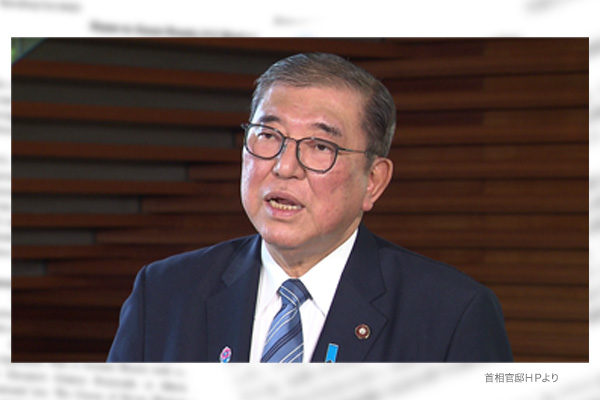U.S. President Donald Trump announced on March 26 that an additional 25% tariff will be imposed from April 3 on all imported autos including those from Japan. Given Japan’s auto exports to the United States at about 6 trillion yen (about $40b), the additional tariff will exert an enormous impact on the Japanese economy to which the auto industry is key. Since the auto industry has a wide base, auto and related industries cover 5.5 million jobs in Japan.
“We are considering all possible options,” Prime Minister Shigeru Ishiba told the National Diet when he was questioned how to avoid the additional auto tariff. However, indications are that the government has so far failed to strategically tackle the issue. Japanese Economy, Trade and Industry Minister Yoji Muto asked U.S. Commerce Secretary Howard Lutnick and others for an exemption for Japan earlier this month, but this was not granted. Although it was then decided to discuss the matter at the working level, there was no way that the matter could be resolved by sending it down to the working level, as it had not been settled by the cabinet ministers. Rather, since the decision on the tariff system is up to President Trump, it is only natural that Prime Minister Ishiba himself should take the initiative. Ishiba’s own seriousness is in question.
Souvenir left by Abe
In my previous essay (dated March 17), I pointed out that Japan should leverage the Japan-U.S. trade agreement, which was concluded during the first Trump administration, to exert strong pressure on the U.S. in future negotiations. Trump’s announcement this time clearly runs counter to his affirmation with then Japanese Prime Minister Shinzo Abe that no additional tariff would be imposed on auto imports from Japan. Under the agreement, Japan made concessions to reduce tariffs on beef and other farm products from the U.S. Japan should strongly press the U.S., saying, “If the U.S. side breaks its promise, we will have no choice but to withdraw our concessions on farm products.” Even without threatening to impose retaliatory tariffs, Japan can leverage the trade agreement to get the same effect as that of retaliatory tariffs.
Even if this kind of language can be used in negotiations at the working level, however, it is necessary to be careful not to provoke a backlash and have the opposite effect when addressing Trump. Instead, Ishiba could tell Trump that “Abe was able to leverage this promise to persuade the Diet and the farm industry to accept the domestically-difficult concessions on farm imports.” It would make sense for a leader to bring up the promise between leaders. The question is whether Ishiba is skilled in doing so.
Develop a system for countermeasures
In my previous essay, I also pointed out that countermeasures in the form of retaliatory tariffs should be prepared. Japan has a system to impose retaliatory tariffs only after winning a case at the World Trade Organization and with the approval of the WTO. At a time when the WTO is dysfunctional, however, Japan cannot use the system. Among the Group of Seven countries, only Japan has no system to make independent decisions to impose retaliatory tariffs. Japan should amend the Foreign Exchange and Foreign Trade Act to enable Japan to invoke retaliatory tariffs in the same way as other countries amid rampant economic coercion by the two superpowers, the United States and China.
Masahiko Hosokawa is a professor at Meisei University and a former director-general of the Trade Control Department at Japan’s Ministry of Economy, Trade and Industry. He is also a Planning Committee member at the Japan Institute for National Fundamentals.


